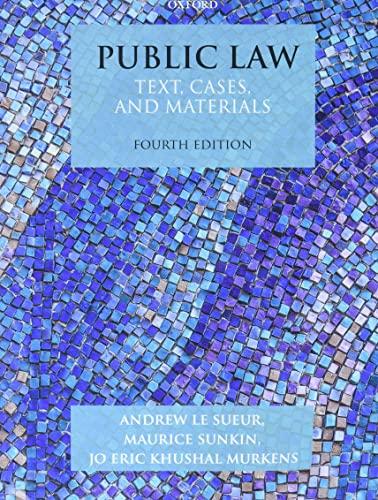Question
CaseStudy-TheRoyalCommissionintoMisconductintheBanking,SuperannuationandFinancial ServicesIndustry (BRC) Read the following case study and respond to all 5 Questions appearing atthe end of the Case Study. Each Question in the
CaseStudy-TheRoyalCommissionintoMisconductintheBanking,SuperannuationandFinancial ServicesIndustry ("BRC")
Read the following case study and respond to all 5 Questions appearing atthe end of the Case Study. Each Question in the Case Study is worth 10marks
"Whydidithappen?
Too often, the answer seems to be greed - the pursuit of short-term profit at theexpense of basic standards of honesty. How else is charging continuing advicefees to the dead to be explained? But it is necessary then to go behind theparticularevents and askhowand why they cameabout.
Banks, and all financial services entities recognised that they sold services andproducts. Selling became their focus of attention. Too often it became the solefocus of attention. Products and services multiplied. Banks searched for their'shareofthecustomer's wallet'.Fromtheexecutivesuitetothefrontline,staffweremeasuredand rewarded by referenceto profit andsales.
When misconductwasrevealed,it eitherwent unpunishedor theconsequencesdid not meet the seriousness of what had been done. The conduct regulator, TheAustralian Securities & Investments Commission ("ASIC"), rarely went to courtto seek public denunciation of and punishment for misconduct. The prudentialregulator, The Australian Prudential Regulation Authority ("APRA"), never wentto court. Much more often than not, when misconduct was revealed, littlehappened beyond apology from the entity, a drawn-out remediation program andprotractednegotiationwithASICofamediarelease,aninfringementnotice,oranenforceable undertaking that acknowledged no more than that ASIC hadreasonable 'concerns' about the entity's conduct. Infringement notices-imposedpenaltiesthat wereimmaterial forthelargebanks.Enforceable undertakings
mightrequirea'communitybenefitpayment',buttheamountwasfarlessthanthe penalty that ASIC could properly have asked a court to impose." (from theInterimReport, Volume1, Commonwealth ofAustralia, 2018. Pg.xix)
Q1. What impact do you believe the findings of the BRC have had on thesustainabilityofthissectorandexplain your answer. (10Marks)
Q2. A number of corporate entities were the subject of the BRC. To whatextentdoyoubelievethatthesecorporationsweremorallyresponsiblefortheiractions and explain your answer.(10 Marks)
With reference to the type of organisations involved in the BRC, identifyand explain the relevant normative ethical theories that you believeapplied. (10Marks)
This sector has been heavily criticised with regards its poor track recordregarding formal ethics programmes that, had they have beenimplemented, may have limited the outcomes evidenced in the BRC.Provide details as to what such a formal ethics programme may look like.(10Marks)
Answer
Step by Step Solution
There are 3 Steps involved in it
Step: 1

Get Instant Access to Expert-Tailored Solutions
See step-by-step solutions with expert insights and AI powered tools for academic success
Step: 2

Step: 3

Ace Your Homework with AI
Get the answers you need in no time with our AI-driven, step-by-step assistance
Get Started


